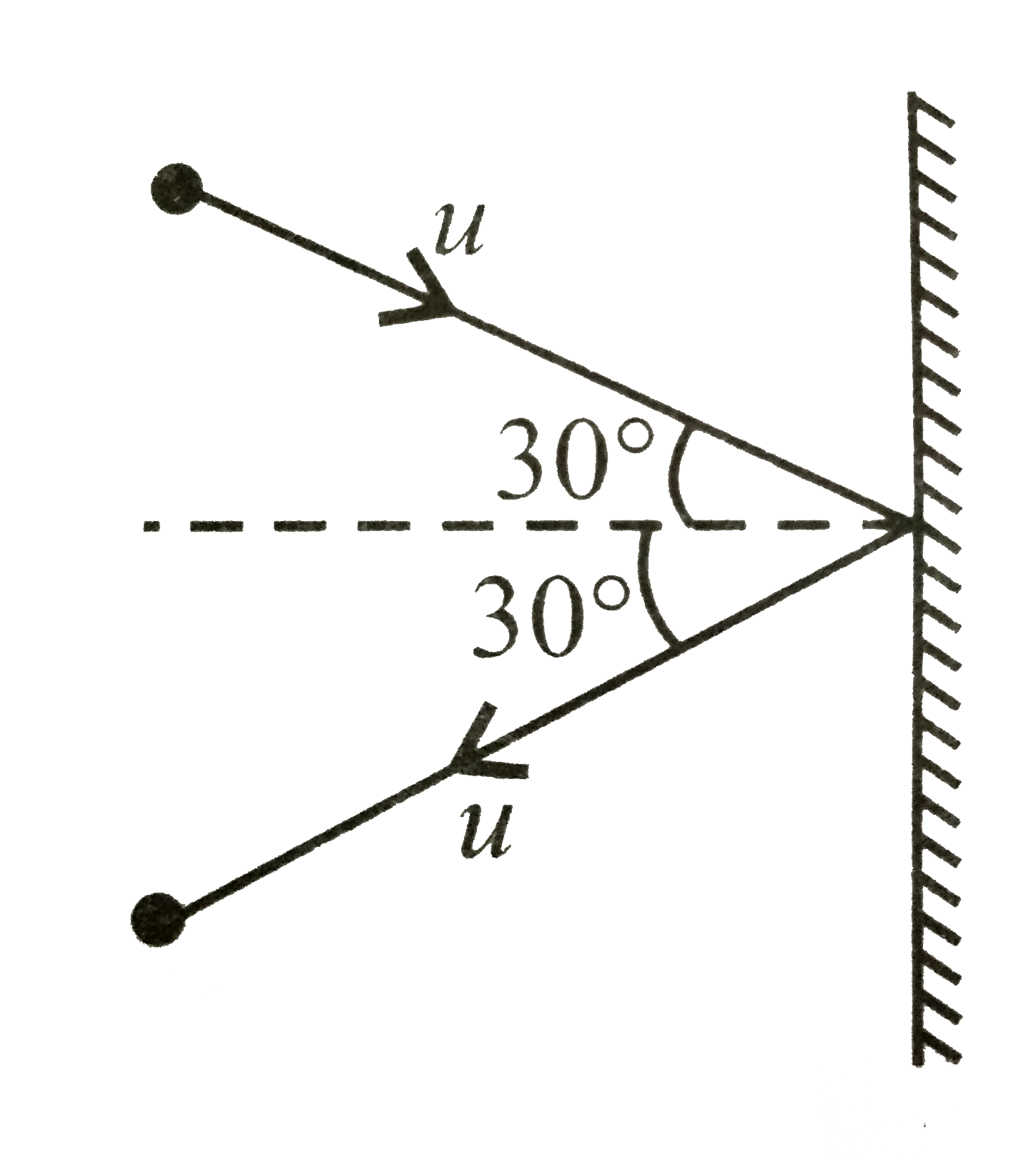Two billiard balls each of mass 0.05 kg moving in opposite directions with speed 6ms−1 collide and rebound with the same speed. What is the impulse imparted to each ball due to the other ?
To solve the problem of finding the impulse imparted to each billiard ball due to the other during their collision, we can follow these steps:
Step 1: Understand the Initial Conditions
- We have two billiard balls, each with a mass m=0.05kg.
- Ball 1 is moving in the positive direction with a speed of u1=6m/s.
- Ball 2 is moving in the negative direction with a speed of u2=−6m/s.
Step 2: Determine the Final Velocities After Collision
- After the collision, both balls rebound with the same speed but in opposite directions.
- Therefore, the final velocity of Ball 1 is v1=−6m/s (moving backward).
- The final velocity of Ball 2 is v2=6m/s (moving forward).
Step 3: Calculate the Impulse for Ball 1
- The impulse J imparted to an object is given by the change in momentum:
J1=m(v1−u1)
- Substituting the values:
J1=0.05kg×(−6m/s−6m/s)=0.05kg×(−12m/s)
- Calculating this gives:
J1=−0.6kg m/s
Step 4: Calculate the Impulse for Ball 2
- Similarly, we calculate the impulse for Ball 2:
J2=m(v2−u2)
- Substituting the values:
J2=0.05kg×(6m/s−(−6m/s))=0.05kg×(6+6)=0.05kg×12m/s
- Calculating this gives:
J2=0.6kg m/s
Conclusion
- The impulse imparted to Ball 1 is −0.6kg m/s (indicating a change in direction).
- The impulse imparted to Ball 2 is 0.6kg m/s.
Final Answer
The impulse imparted to each ball due to the other is:
- Ball 1: −0.6kg m/s
- Ball 2: 0.6kg m/s
- We have two billiard balls, each with a mass m=0.05kg.
- Ball 1 is moving in the positive direction with a speed of u1=6m/s.
- Ball 2 is moving in the negative direction with a speed of u2=−6m/s.
- After the collision, both balls rebound with the same speed but in opposite directions.
- Therefore, the final velocity of Ball 1 is v1=−6m/s (moving backward).
- The final velocity of Ball 2 is v2=6m/s (moving forward).
- The impulse J imparted to an object is given by the change in momentum:
J1=m(v1−u1)
- Substituting the values:
J1=0.05kg×(−6m/s−6m/s)=0.05kg×(−12m/s)
- Calculating this gives:
J1=−0.6kg m/s
- Similarly, we calculate the impulse for Ball 2:
J2=m(v2−u2)
- Substituting the values:
J2=0.05kg×(6m/s−(−6m/s))=0.05kg×(6+6)=0.05kg×12m/s
- Calculating this gives:
J2=0.6kg m/s
- The impulse imparted to Ball 1 is −0.6kg m/s (indicating a change in direction).
- The impulse imparted to Ball 2 is 0.6kg m/s.
The impulse imparted to each ball due to the other is:
- Ball 1: −0.6kg m/s
- Ball 2: 0.6kg m/s
Topper's Solved these Questions
Similar Questions
Two billiard balls A and B each of mass 50 g and moving in opposite directions with speed of 5m/s each, collide and rebound with the same speed if the collision lasts for 10−3 s which of the following statement(s) is (are) true?
View Solution(b) Two balls each of mass m moving in opposite direction with equal speed v collide head -on with each other . Predict the outcome of the collision assuming it perfectly elastic.
View Solution
Knowledge Check
Two billiard ball A and B each of mass 50g and moving in opposite direction with speed of 5ms−1 each, collide and rebound with the same speed. The impulse imparted to each ball is
A0.25kgms−1B0.5kgms−1C0.8kgms−1D0.125kgms−1A ball of mass m strikes a rigid walJ with speed u and rebounds with the same speed. The impulse imparted to the ball by the wall is
A2muBmuCzeroD−2muA ball of mass m strikes a rigid walJ with speed u and rebounds with the same speed. The impulse imparted to the ball by the wall is
 Amu sin30∘tB2mu sin30∘tCmu cos30∘tD2mu cos30∘t
Amu sin30∘tB2mu sin30∘tCmu cos30∘tD2mu cos30∘t
Two identical balls each of mass 4 kg are moving towards each other with speeds 2 m/s and 3 m/s respectively. They undergo head on perfectly elastic collision. Then impulse imparted by one ball on other is
View SolutionA ball of mass 2 kg is moving with velocity 20 m/sec strikes with the surface and rebounds with same speed, if time of contact is 0.1 sec then calculate average force on the ball.
View SolutionTwo trains going in opposite directions with the same speed are at rest relative to each other. True/False.
View SolutionA ball of mass M moving with speed v collides perfectly inelastically with another ball of mass m at rest. The magnitude of impulse imparted to the first ball is
View SolutionA ball of mass M moving with speed v collides perfectly inelastically with another ball of mass m at rest. The magnitude of impulse imparted to the first ball is
View Solution